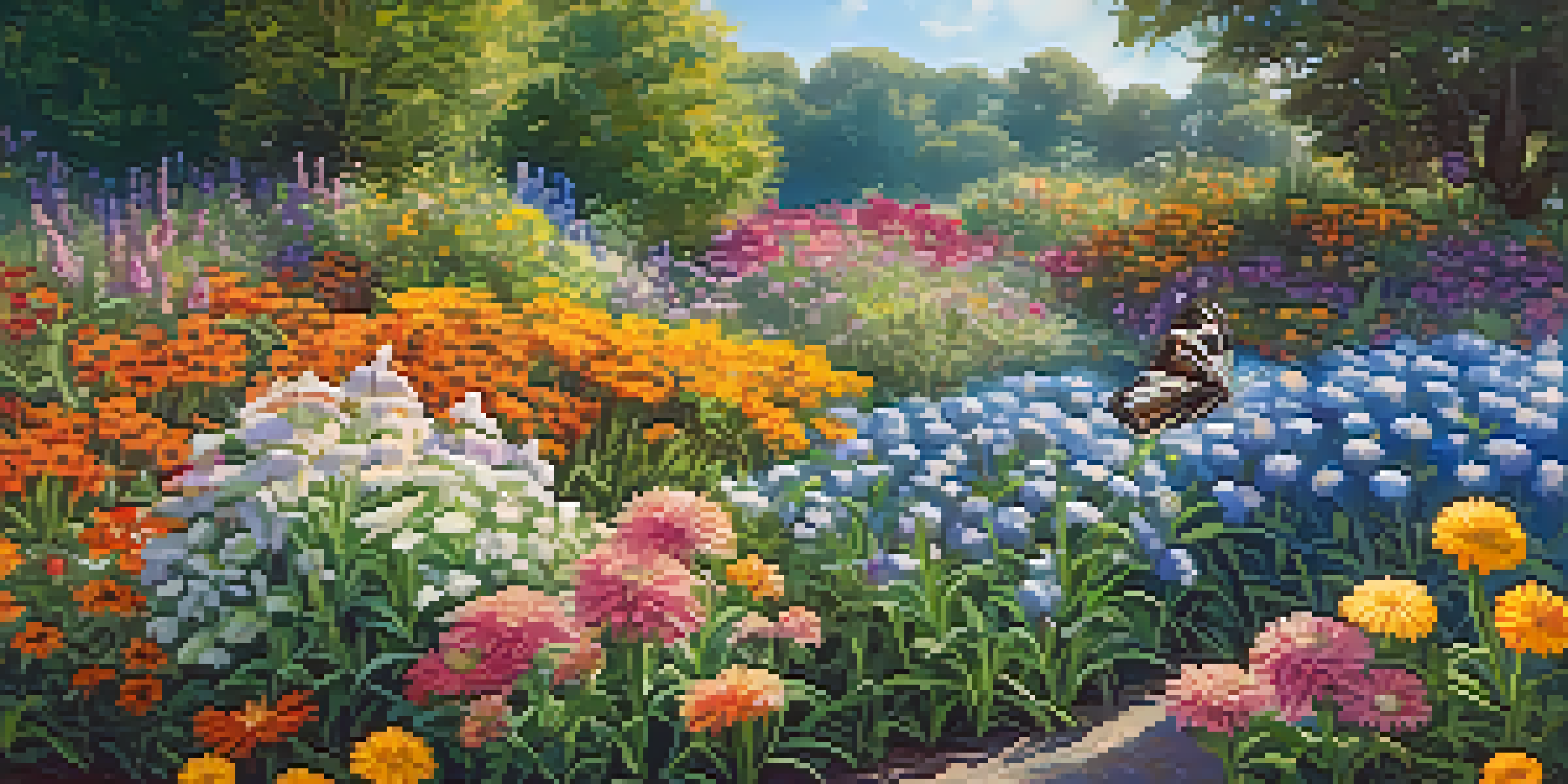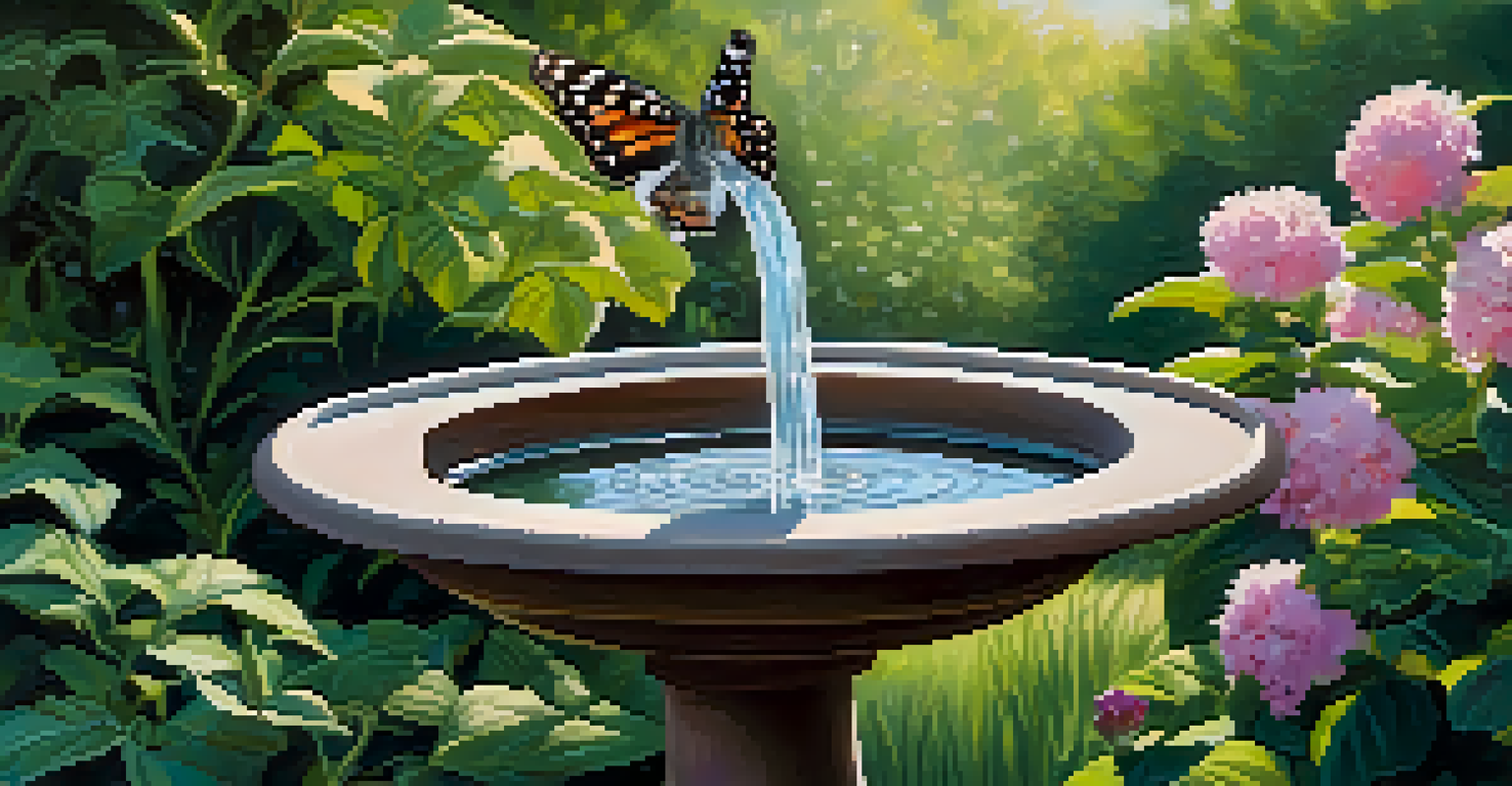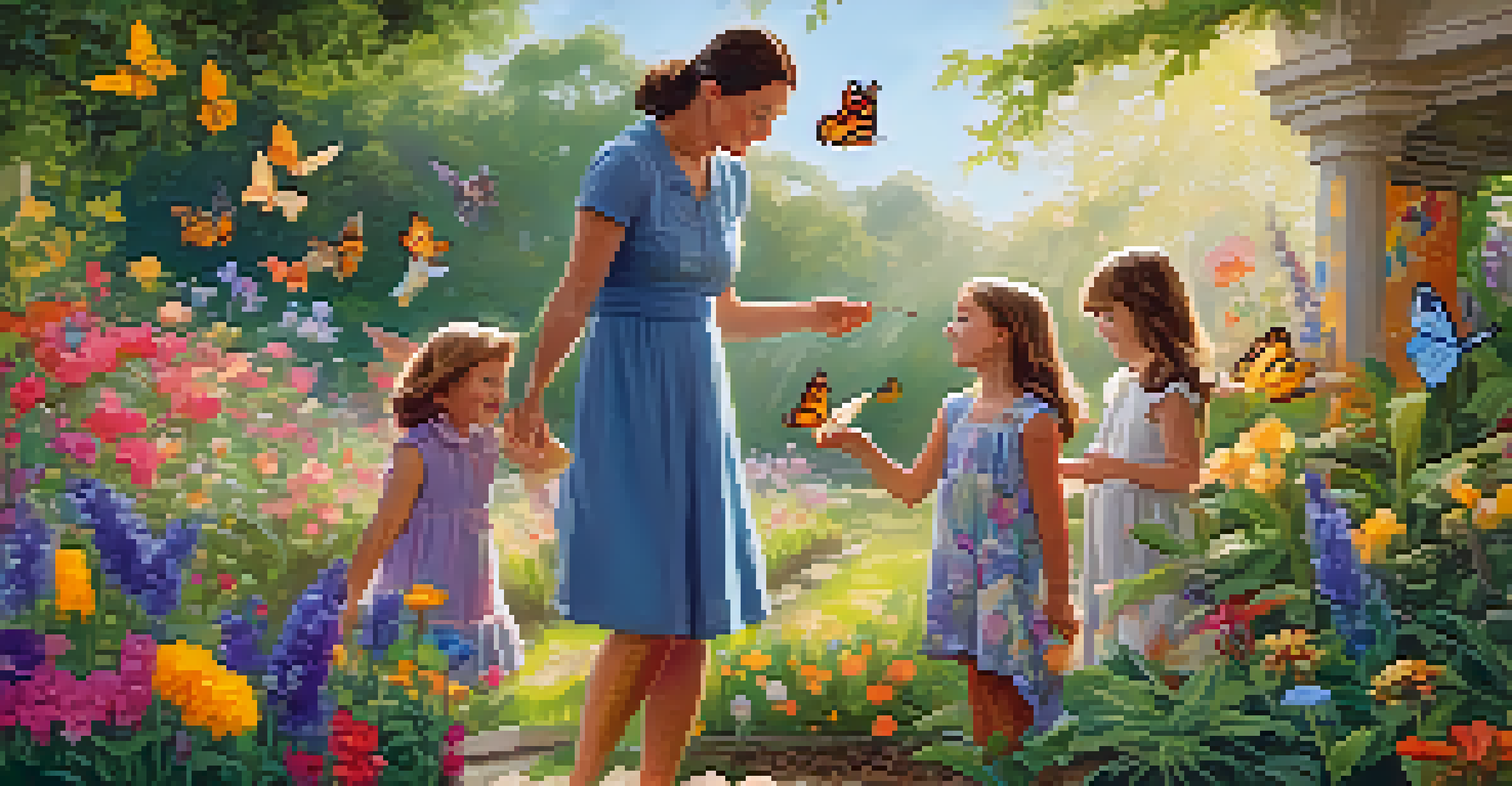Creating a Butterfly Garden: Essential Plants and Layouts

Understanding the Importance of Butterfly Gardens
Butterfly gardens are not only beautiful but also crucial for the ecosystem. They provide habitats for these pollinators, which play a vital role in the food chain. By creating a space that caters to butterflies, you also support other wildlife, like bees and birds, promoting biodiversity in your area.
The butterfly counts not months but moments, and has time enough.
In addition to ecological benefits, butterfly gardens can enhance the beauty of your landscape. With vibrant colors and various flower shapes, they transform any backyard into a lively haven. Imagine stepping outside to a flutter of wings and a splash of color—it's like having a piece of nature's artwork right at home.
Moreover, butterfly gardens can be educational. They offer a fantastic opportunity for families to learn about nature and the life cycle of butterflies. Engaging children in gardening can cultivate a love for the environment, making them more conscious of nature's wonders.
Choosing the Right Location for Your Garden
Finding the perfect spot for your butterfly garden is crucial for its success. Ideally, you want a sunny area that receives at least six hours of sunlight daily, as butterflies are sun-loving creatures. A warm, sheltered location, such as near a fence or a wall, can also protect them from harsh winds.

Additionally, consider accessibility when choosing your garden location. You’ll want to be able to easily tend to your plants while enjoying the view. Positioning your garden near a window or patio can ensure you enjoy the beauty and activity of butterflies from your home.
Butterfly Gardens Boost Biodiversity
Creating butterfly gardens supports not only butterflies but also other wildlife, enhancing local biodiversity.
Lastly, avoid areas with heavy pesticide use, as these chemicals can harm butterflies and other beneficial insects. Instead, opt for organic gardening practices to create a safe haven for your fluttering friends. This not only helps the butterflies thrive but also contributes to a healthier environment.
Essential Plants to Attract Butterflies
Selecting the right plants is key to attracting butterflies to your garden. Native plants are often the best choice, as they are adapted to your local climate and provide the necessary food sources for caterpillars and adult butterflies. For instance, milkweed is essential for monarchs, while asters and coneflowers attract a variety of species.
Nature does not hurry, yet everything is accomplished.
In addition to nectar-rich flowers, incorporating host plants for caterpillars is vital. These are the plants where butterflies lay their eggs, and their larvae will feed. Examples include parsley and fennel for swallowtails or nettles for red admirals, ensuring a complete lifecycle in your garden.
Color plays a significant role as well—bright colors like yellow, red, and purple are particularly appealing to butterflies. By mixing these colors throughout your garden, you create a vibrant tapestry that invites butterflies to visit. Remember, a diverse plant selection not only attracts various butterfly species but also extends the blooming season.
Creating a Layered Garden Layout
A well-planned garden layout can enhance both aesthetics and butterfly attraction. Consider creating layers by planting taller flowers at the back and shorter ones in the front. This not only provides visual interest but also allows butterflies to access all the plants easily.
Adding different heights and textures can create a more inviting environment. Incorporate shrubs, ornamental grasses, and perennials to provide shelter and resting places for butterflies. A layered garden mimics natural habitats, making it more appealing to these delicate creatures.
Choose the Right Plants and Layout
Selecting native plants and designing a layered garden layout attract more butterflies and provide essential habitats.
You can also consider grouping plants in clusters rather than scattering them. This technique attracts butterflies more effectively as it creates a concentrated source of food. When butterflies find a rich patch of flowers, they are more likely to linger and enjoy your garden.
Incorporating Water Sources and Shelter
Butterflies, like all living creatures, need water to survive. Incorporating shallow water sources, such as birdbaths or small ponds, can fulfill this need. Just remember to add stones or pebbles for butterflies to perch on while sipping water, preventing them from drowning.
Providing shelter is equally important. Butterflies require safe spots to rest, hide from predators, and escape harsh weather. Planting dense shrubs or installing butterfly houses can create these safe havens, making your garden a secure environment for them.
Additionally, consider leaving some areas of your garden wild. Patches of uncut grass or native plants can provide essential habitat for caterpillars and other insects. A little chaos in your garden can lead to a thriving ecosystem, attracting more butterflies than you might expect.
Maintaining Your Butterfly Garden
Maintenance is key to keeping your butterfly garden thriving. Regular watering, especially during dry spells, ensures that your plants remain healthy and vibrant. A well-hydrated garden not only looks good but also keeps the butterflies coming back for more.
Weeding is another essential task, as unwanted plants can compete with your butterfly-attracting flowers for nutrients and space. However, be cautious when removing weeds; some may serve as host plants. Regularly check for caterpillars and avoid using chemicals that could harm them.
Enjoy and Maintain Your Garden
Regular maintenance and observation of your butterfly garden enrich your experience and foster a deeper connection with nature.
Lastly, consider seasonal planting to ensure a continuous bloom throughout the year. By rotating or adding new plants in different seasons, you can maintain a varied and inviting landscape that supports butterflies year-round. Keeping your garden dynamic will encourage butterflies to visit at different times, enhancing your garden’s beauty.
The Joy of Watching Butterflies in Your Garden
One of the greatest rewards of creating a butterfly garden is the joy of watching these beautiful creatures flutter about. Observing their behavior can be fascinating; you'll see different species interacting with your plants, and you may even witness the entire life cycle from caterpillar to butterfly.
This experience can be particularly rewarding for families, as it provides an opportunity to connect with nature. Kids will love tracking the various butterflies, learning about their habits, and even participating in gardening tasks. It becomes a fun and educational activity that fosters a deeper appreciation for the environment.

Additionally, a butterfly garden can serve as a peaceful retreat. The gentle fluttering of wings and the colorful display of flowers create a serene atmosphere. Whether you’re sipping coffee in the morning or unwinding after a long day, your butterfly garden can offer a moment of tranquility and connection with nature.